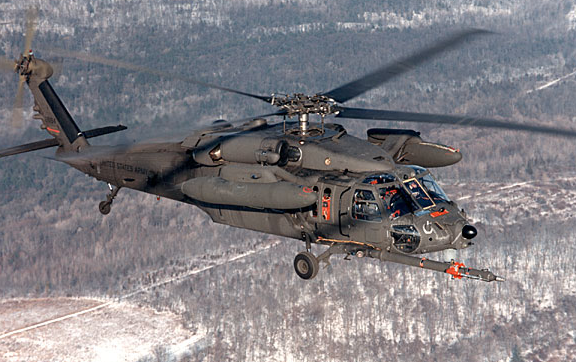Pakistan has returned the wreckage of the helicopter used by Navy Seal 6 to kill Osama Bin Laden earlier in the month. Notwithstanding the utter embarassment Pakistans military must be feeling about having a couple of huge helicopters fly right up to the doorstep of their premier military academy in the middle of the night, it's also pretty embarassing for the US military that a high tech stealth helicopter had to be blown up as part of the mission.
I'm sure the Seal Team 6 commandos didn't have any issue with blowing up a several million dollars of tax-payers money, they are trained to think on their feet, after all. What interested me more is the actual technology involved. The published picture of the tail of the helicopter sure doesn't look like your standard MH-60 Blackhawk, which is the bird you you expect them to be using.
Look at the very unusual
exhaust port (dark trapezoid shape),
the tapered cover on
the top of the rotor, and the
five rotor blades.
All screams stealth technology.
Supposedly the MH-60 Blackhawk is normally used by seals for covert ops. American Special Ops had this to say. "The MH-60 series of helicopters are a highly modified UH-60 Black Hawks, the U.S. Army's utility helicopter, flown exclusively by the 160th Special Operations Aviation Regiment (SOAR)"
Take a look at this image instead of the cancelled RAH-66 Comanche. Look at the at the tail structure, and exhaust port outlets around the engine, which appear to be ported right down low by the tail just before the enclosed rear rotor in order to reduce the heat signature. I would say there are a lot more similarities between the tail rotor left in the Bin Laden raid and the Comanche, than the existing MH-60 models. Supposedly the Comance program was cancelled, but it is hard to believe the that military makes do with only the Bell Kinowa Warrior (based on Bell Jet Ranger, proven design by not exactly state of the art) as the only small helicopter used for reconnaissance.
Above Top Secret had some interesting things to say about both the noise reduction technology and the Comanche. They theorized was Eurocopter Blue Edge rotor blade noise reduction. I'm not sure about the credibility of this site, but assuming the technology is as effective as the demo, it does seem credible that these helicopters were indeed very quiet.
Black Ops being what they are, I see no reason why secret helicopter designs couldn't be out there.
Lets keep guessing.




